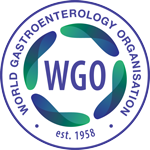Heartburn and Chronic Constipation: The Asian Perspective
Vol. 17, Issue 2 (July 2012)
 |
Kwong-Ming Fock, MD
Department of Gastroenterology
Changi General Hospital
Singapore
|
| |
|
 |
Daphne Ang, MD
Department of Gastroenterology
Changi General Hospital
Singapore
|
| |
|
 |
Poh Choo Hean, MD
Department of Gastroenterology
Changi General Hospital
Singapore
|
Gastroesophageal reflux disease (GERD) and constipation are two of the more prevalent GI disorders encountered by physicians in Asia. Until 2003, GERD was thought to be uncommon in Asia but in the last decade, there has been an increase in the prevalence of GERD including both erosive and non-erosive reflux disease (NERD) 2,3,4. Estimates of constipation prevalence range from 8.75% in the Asia Pacific region to 27% in Western countries 5. Within Singapore, the prevalence of chronic constipation was estimated to be 7%, with females more commonly affected than males (11% vs. 3% respectively) 6.
Heartburn and acid regurgitation are typical symptoms of GERD. Atypical GERD symptoms include epigastric pain, non-cardiac chest pain, sore throat, unexplained chronic cough and hoarseness of voice 7. The accuracy of heartburn and acid regurgitation in the diagnosis of GERD is difficult to define, limited by the lack of a gold standard for the diagnosis of GERD. Furthermore, many languages do not have a direct translation for the word “heartburn.” Unique to Asia, the multicultural and multiracial population of patients do interpret “heartburn” differently. Whilst a test-and-treat approach with proton pump inhibitors (PPI) in patients with no alarm symptoms is recommended as a first line option in existing guidelines, it has its limitations. A response or lack of response to PPI does not always confirm or exclude a diagnosis of GERD. There is high false positive response due to placebo effect alone.
Up to 50% of patients with GERD will have normal endoscopies. Nevertheless, endoscopy is indicated in patients with complicated disease. The prevalence of Barrett’s oesophagus is generally low in Asian countries, ranging from 0.9%-2% 8,9. Endoscopy is performed in patients in the region to exclude peptic ulcer or gastric cancer rather than to exclude Barrett’s oesophagus. Recently, more enhanced endoscopic imaging have allowed the Asian clinician to better evaluate patients through the use of narrow band imaging that allows enhanced visualisation of the oesophageal mucosal 10. Reports from Asia have indicated the usefulness in evaluating NERD whilst reports from the West indicate the usefulness of this modality in Barrett’s oesophagus 11.
Continuous pH monitoring with either the conventional ambulatory pH monitor or the wireless pH capsule 12 as well as the use of the combined 24 hour pH impedance system that evaluates both acid and non-acid reflux have further enhanced our understanding of the complex pathogenesis underlying GERD symptomatology 13. Whilst these novel tools have enhanced our diagnostic armamentarium, their use in routine clinical practice is limited by costs and availability.
In Asia, there is a controversy regarding the relationship between Helicobacter pylori infection and development of GERD. Helicobacter pylori eradication does not worsen GERD but on the other hand, there is convincing evidence showing the benefit of eradication of helicobacter pylori in curing peptic ulcer disease and reducing the risk of gastric cancer 14. Hence testing and treating H pylori should be considered in region with high prevalence of peptic ulcer disease or gastric cancer.
Constipation is a polysymptomatic disorder 15. Discrepancies in the population prevalence of constipation have been attributed to the lack of a uniform diagnostic criteria and the number of patients who seek medical care. Constipation is associated with significantly impaired quality of life and psychological distress 16, as well as increased health care costs and impaired work productivity 17. Being a polysymptomatic disorder, the presence of symptoms such as excessive straining, passage of hard stools and feeling of incomplete evacuation are equally or even more important than the actual frequency of bowel movements. This recognition of the heterogeneity of symptoms in chronic constipation represents a major challenge in the management of patients with this chronic condition.
Three overlapping subtypes of constipation have been defined, namely (i) slow transit constipation, (ii) normal transit constipation and (iii) dyssynergic defecation 16. Slow and normal transit constipation can occur concurrently with dyssynergic defecation. Up to 50% 18 of patients with chronic constipation who were referred to a tertiary care centre for further evaluation were found to have dyssynergic defecation. However, there is a lack of data on the prevalence of dyssynergic defecation amongst Asians. Subtyping the various types of constipation helps the clinician to tailor treatment appropriately. In the absence of alarm symptoms or a family history of colon cancer, motility tests are not indicated unless patients have failed conservative treatment with increased dietary fibre and fluid intake and eliminating any secondary cause 19. Investigative modalities targeted at evaluating patients with chronic constipation after exclusion of secondary causes include colonic transit markers, balloon expulsion test, colonic manometry and anorectal manometry. More sophisticated techniques include magnetic resonance defecography for real-time evaluation of structural abnormalities and the wireless colonic SMART® pill. The main aim of subtyping patients with chronic constipation stems from the evidence that it allows an algorithmic approach to the management of patients based on the underlying pathophysiology 20. This is particularly relevant for patients with pelvic dyssynergia where biofeedback therapy has proven beneficial effects. However, these tests are not routinely performed outside of research centres. In addition, these tests lack sensitivity. Healthy asymptomatic subjects have been reported to have abnormalities suggestive of pelvic floor dyssynergia on anorectal manometry. In addition, normal values of MR defecography have not been well defined. Faced with the limitations of costs, availability and lack of standardized normal values, these tests are not routinely performed in Asia. More studies on the epidemiology of the various subtypes of chronic constipation in Asians are awaited.
Faced with the lack of routine availability of these diagnostic tools, patients with chronic constipation are often prescribed laxatives for symptom relief. Traditional laxatives such as bulking agents and osmotic laxatives are first line treatment readily available but are associated with high dissatisfaction rates 21. More recently, the 5HT4 receptor agonist Prucalopride (Resolur®) received regulatory approval by the Health Sciences Authority (HSA) in Singapore for use in male or female patients with chronic constipation who have failed conventional laxatives. In controlled trials in chronic constipation, Prucalopride has been shown to significantly improve the number of spontaneous bowel movements and the associated symptoms, whilst maintaining a favourable safety record. More studies are awaited with regards to the long term efficacy of this novel agent.
Similar to the West, heartburn and chronic constipation are highly prevalent conditions in Asia, with significant impact on quality of life and socio-economic costs. However, epidemiological studies within Asia have shown a higher prevalence of gastric cancer and a lower prevalence of Barrett’s oesophagus compared to the West. Such subtle differences in epidemiology were addressed in the latest Asia-Pacific GERD consensus 1 and highlight the need for guidelines unique to Asia. In Asian societies such as Singapore, where surgical options for functional GI disorders are rarely considered, the availability of novel prokinetic agents such as Prucalopride for chronic constipation represents a significant advancement in our treatment armamentarium. As we evaluate this drug with cautious optimism, our past experience from Tegaserod serves as a constant reminder of the potential safety issues surrounding the serotonin agonists, although these fears have not been borne out by the favourable safety profile to date of Prucalopride.
References
- Fock KM, Talley NJ, Fass R, et al. Asia Pacific consensus on the management of gastroesophageal reflux disease: an update. Journal of Gastroenterology and Hepatology 2008;23(1):8-22.
- Wong WM, Lim P, Wong BC. Clinical practice pattern of gastroenterologist, primary care physicians and otolaryngologists for management of GERD in the Asia-Pacific region: the FAST survey. J Gastroenterology Hepatol 2004:19;S54-S60.
- Furukawa N, Iwakiri R, Koyama T et al. Proportion of reflux esophagitis in 6010 Japanese adults: prospective evaluation by endoscopy. J Gastroenterol 1999;34:441-444.
- Song HJ, Choi KD, Jung HY et al. Endoscopic reflux esophagitis in patients with upper abdominal pain-predominant dyspepsia. J Gastroenterol Hepatol 2007;22:2217-2221.
- Longstreth GF, Thompson WG, Chey WD, et al. Functional bowel disorders. Gastroenterol 2006;130(5):1480-91.
- Chen LY, Ho KY, Phua KH. Normal bowel habits and prevalence of functional bowel disorders in Singaporean adults: Findings from a community based study in Bishan. Community Medicine GI Study Group. SMJ 2000;41(6):255-258.
- Fock KM, Choo Hean Poh. Gastroesophageal reflux disease J Gastroenterol (2010)45:808 815.
- Rosaida MS, Goh KL. Gastro-esophageal reflux disease, reflux esophagitis and non-erosive reflux disease in a multiracial Asian population; a prospective, endoscopy based study. Eur J. Gastroenterol Hepatol 2004;16:495-501.
- Hongo M. Review article; Barrett’s esophagus and carcinoma in Japan. Aliment Pharmacol Ther. 2004;20:50-4.
- Fock KM, Teo EK, Ang TL, et al. The utility of narrow band imaging in improving the endoscopic diagnosis of gastroesophageal reflux disease. Clin Gastro Hepatol 2009;7(1):54-9.
- Singh R, Anagnostopoulos GK, Yao K. et al. Narrow-band imaging with magnification in Barrett’s oesophagus: validation of a simplified grading system of mucosal morphology patterns against histology. Endoscopy 2008;40(6):457-63.
- Ang D, Teo EK, Ang TL, et al. To Bravo or not? A comparison of wireless oesophageal pH monitoring and conventional pH catheter to evaluate nonerosive reflux disease in a multiracial Asian cohort. J Dig Dis 2010;11(1):19-27.
- Ang D, Teo EK, Ang TL, et al. Is impedance pH monitoring superior to the conventional 24 hour pH meter in the evaluation of patients with laryngorespiratory symptoms suspected to be due to GERD. J Dis Dis 2011;12(5):341-8.
- Wong BCY, Lam SK, Wong WM et al. Helicobacter pylori eradication to prevent gastric cancer in a high risk region of China. JAMA 2004;291:187-94.
- Rao S. Constipation: Evaluation and treatment of colonic and anorectal motility disorders. Gastroenterol Clin N Am 2007;36:687-711.
- Chang L, Tonner B, Fukoda S, et al. Gender, age, society, culture and the patient’s perspectives in the functional gastrointestinal disorders. Gastroenterol 2006;130:1435-46.
- Singh G. Use of health care resources and cost of care for adults with constipation. Clin Gastroenterol Hepatol 2007;5(9):1053-8.
- Bharucha AE, Wald A, Enck P, Rao S. Functional Anorectal Disorders. Gastroenterol 2006;130:1510-8.
- Surrenti E, Rath DM, Pemberton JH, Camilleri M. Audit of constipation in a tertiary referral gastroenterology practice. Am J Gastroenterol 1995;90:1471-1475.
- Camilleri M, Bharucha AE. Behavioural and new pharmacological treatments for constipation: getting the balance right. Gut 2010;59:1288-1296.
- Johanson JF, Kralstein J. Chronic constipation: A survey of the patient perspective. Aliment Pharmacol Ther 2007;25(5):599-608.
- Crawley JA, Maclin Schmitt C. How satisfied are chronic heartburn sufferers with their prescription medications? Results of the patient unmet needs survey. J Clin Outcomes Management 2000;7:29-34.




